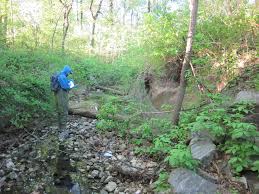New Guidance for Monitoring and Reporting on Hydrologically Impaired Waters
Is there enough water in your creek to support fish living there? How does the amount of water in your creek impact the physical health of your stream like habitat? In our latest issue of River Voices, we feature an article on Clean Water Act Tools to help understand how to answer these questions.

U.S. Fish and Wildlife Service
Under the Clean Water Act, states are required to report on the health of all waters every two years, including the identification of waters not meeting water quality standards (CWA section 305(b) and CWA 303(d)). For waters not achieving water quality standards, states must prioritize those impaired waters for restoration and develop a pollution cleanup budget, known as a Total Maximum Daily Load (TMDL) for the highest priority waters. States make this information publicly available.
While the requirement for cleanup plans are limited to impairments due to a “pollutant” (which includes solid waste, dredge spoil, chemical, municipal and industrial waste, rock and sand (CWA section 502(6)), states must also use their monitoring and assessment programs to identify impairments from “pollution,” defined as “the man-made or man-induced alteration of the chemical, physical, biological, and radiological integrity of water.” (CWA section 502(19)).
This includes flow alteration and hydromodification – which include things like surface and ground water withdrawals, dams and impoundments, diversions or extreme low or high flows. Because flow alteration and hydromodification affects the chemical, physical and biological integrity of our waters, they are considered “pollution” and should be identified and listed as a cause of impairment of state water quality standards where appropriate.
In EPA’s most recent 2016 guidance to states on how to monitor and report on the status of our streams and rivers, the Agency made clear that states should consider how to “more fully understand the impacts and causes of all types of pollution on our nation’s waters,” with an emphasis on hydrologic impairment.
EPA further detailed how states might collect such data and how such data might differ from traditional measures of water quality recognizing:
“It is possible to have an impaired or threatened designated use that may not be determined through the assessment of available numeric and narrative criteria alone… if a perennial stream is dry or has no flow and field staff are not able to collect a sample, then assessment of the designated use based solely on the sample results of an evaluation of narrative or numeric criteria may not be possible. However, data or information based on visual observations of no water in a perennial stream would be information on the physical condition of the stream, and would demonstrate the aquatic life or recreational use is most likely not being attained and a State may conclude that the designated use is impaired…. Thus data and/or information documenting significant hydrologic alteration could be used to make a use attainment decision for impairment due to pollution not caused by a pollutant and should be collected, evaluated, and reported as appropriate.”
How and when does your state monitor and collect data for their 305(b) and 303(d) reports? Is your state aware of EPA’s new guidance encouraging the identification and reporting of hydrologically impaired waters?
Collection of these data is a step forward in recognizing and documenting streams and rivers that are threatened by not enough water and/or too much water. Identifying these types of impairments will allow states, advocates and other stakeholders to fully understand the extent of these problems and to make the case for addressing them. Look for more detail about this and other tools for water security and sustainability in River Voices and sign up to receive regular news and updates from River Network.




